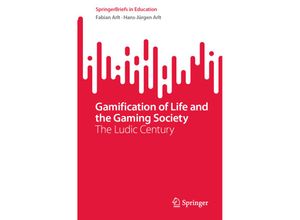This interesting book discusses why as an activity topic and metaphor play and game have
become an integral part of modern life. Empirically exemplary and theoretically grounded this
book discusses the developments and expansions in gaming from easily accessible casual games
to the galaxy-spanning gaming worlds of Massively Multiplayer Online Role-Playing Games
(MMORPGs). It shows how gaming has become a focal point of the entertainment industry marked
by boundless professionalization and monetization especially in the realm of sports and how
games become global platforms for social networks where players from all over the world meet
in digital sandboxes. The combination of the virtual and the ludic creates hyperreal spaces in
which people try out new forms of interaction cooperation and even brainstorming. The authors
ask if this behavior has become the new way of life and the new normal and if this heralds the
ludic century. They take readers on a journey to understand the dynamics of today's gaming
society and base their observations and analyses on an original theory of play which in
contrast to social normalcy revolves around the allure and threats of the unexpected. This
book is of interest to students and researchers of social science and communication studies
especially those working on the interface of AI and society.

